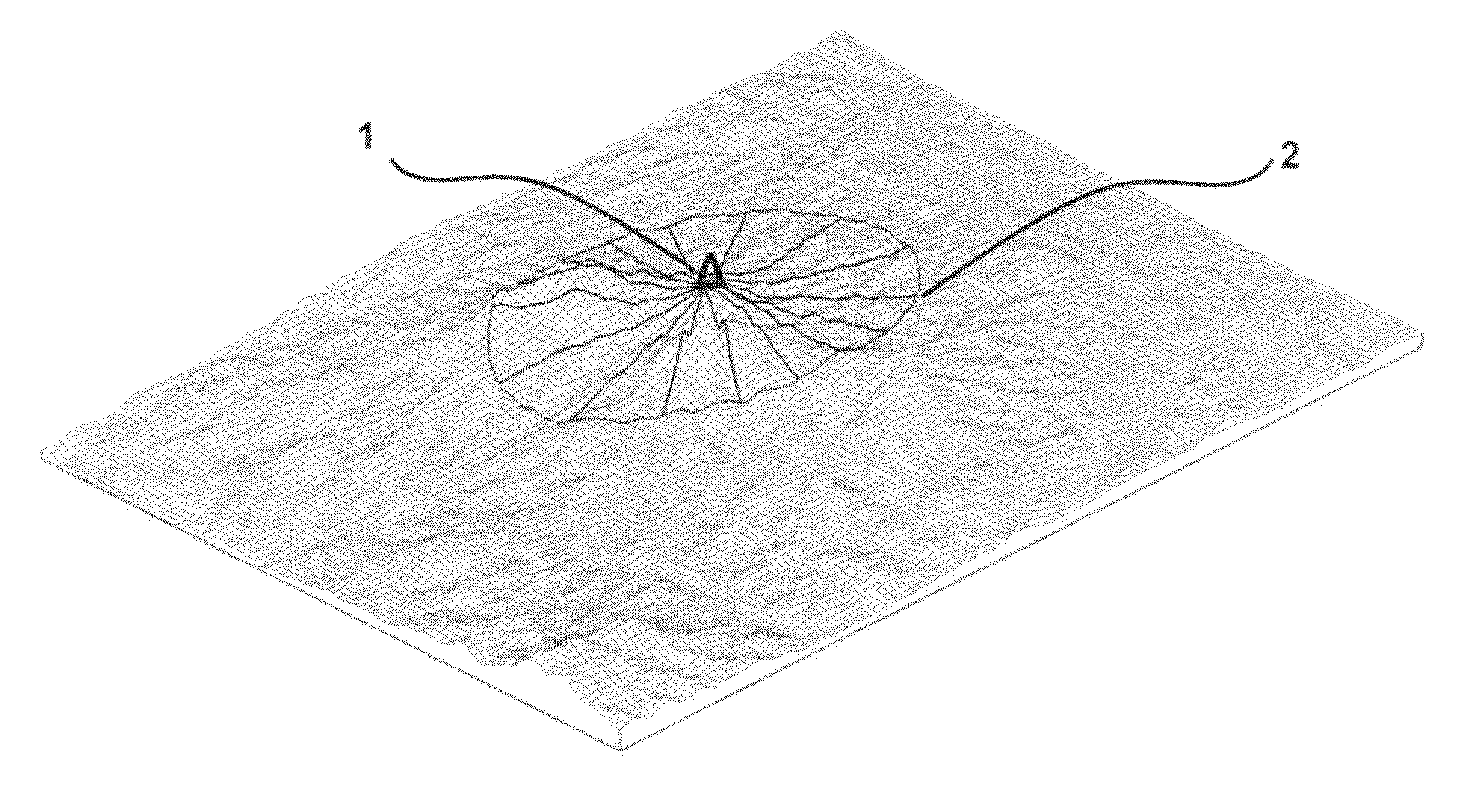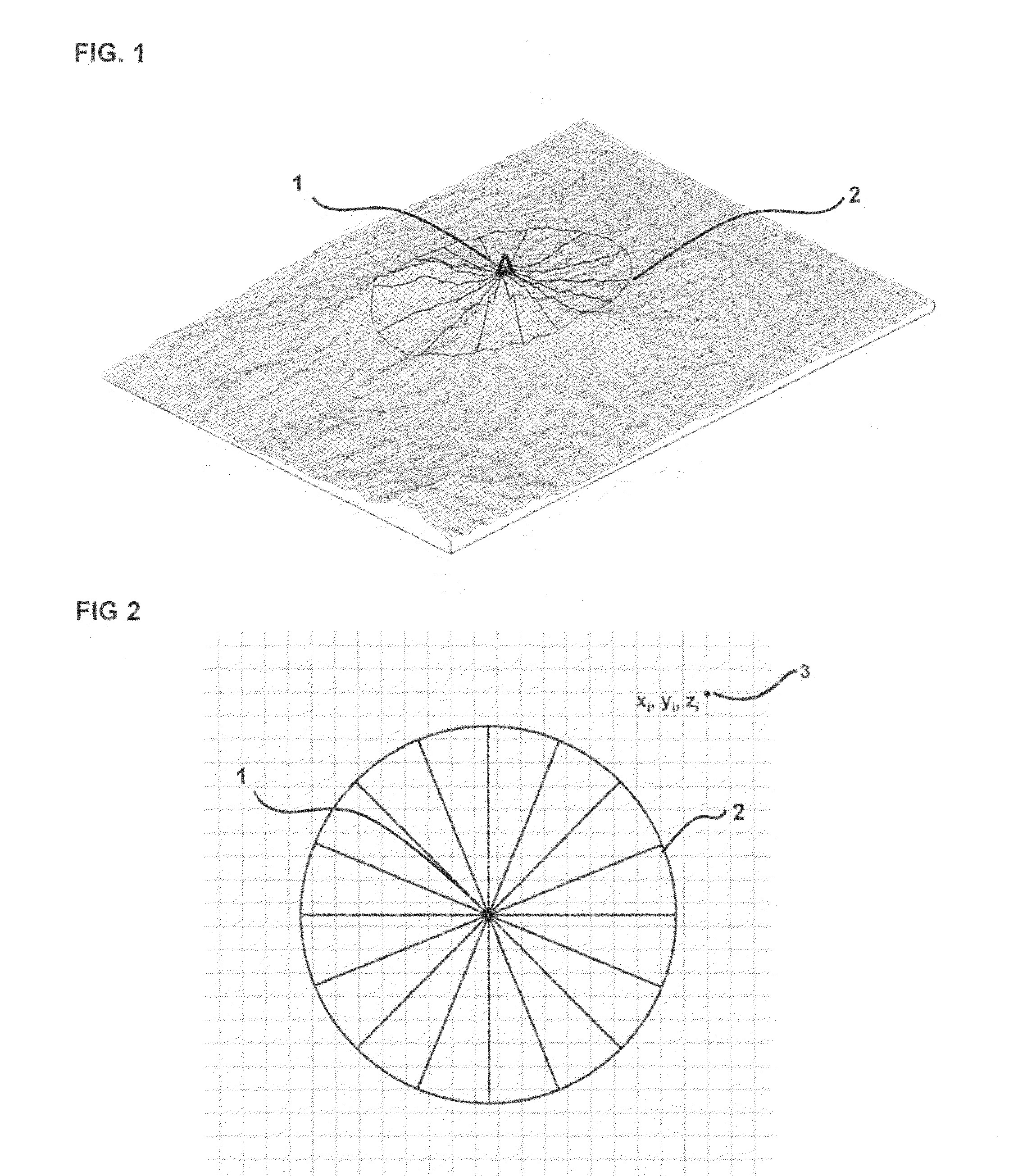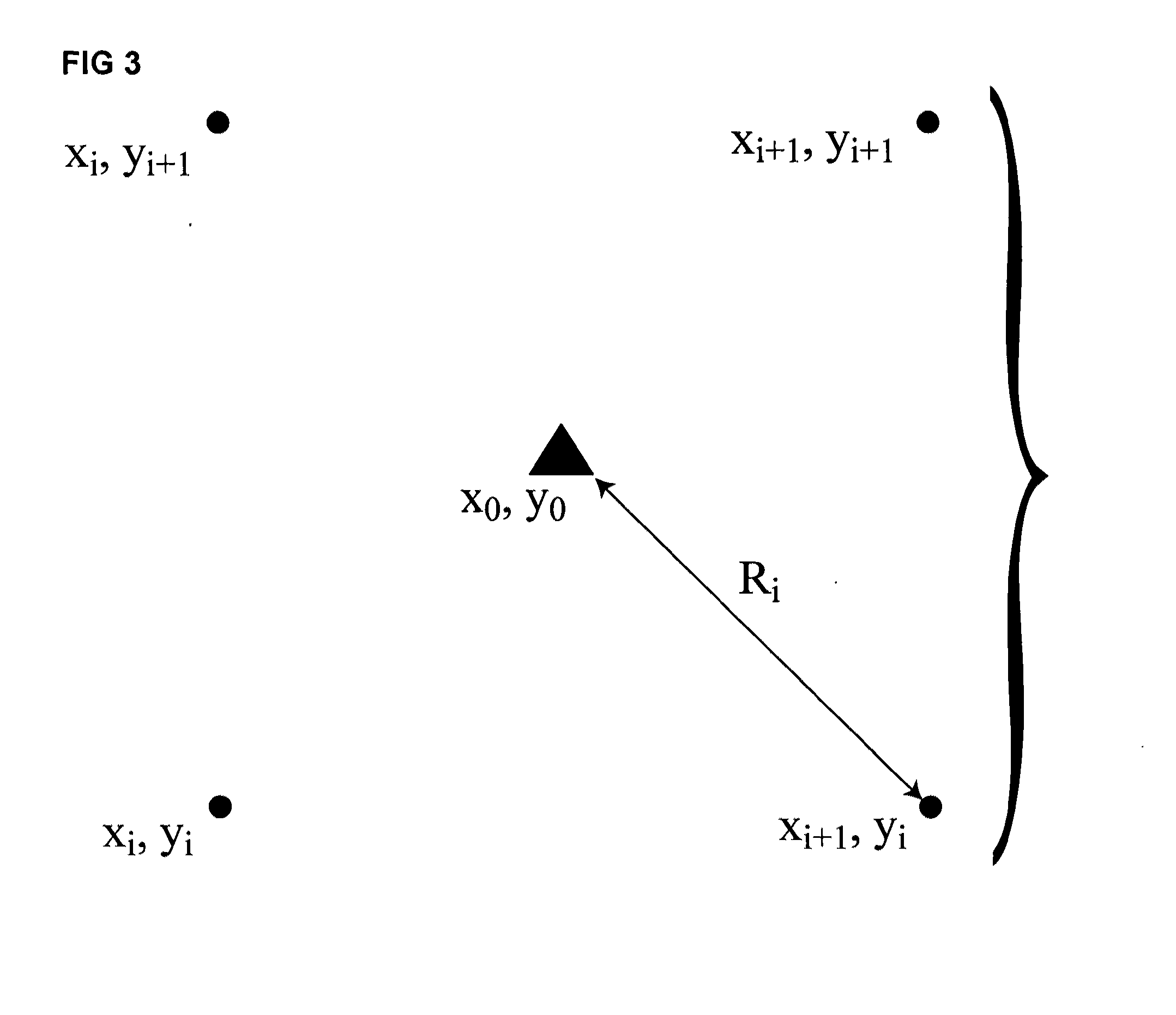Method of evaluating wind flow based on terrain exposure and elevation
a technology of terrain exposure and elevation, applied in the field of wind flow models, can solve the problems of increasing challenge, large errors in the prediction of annual average wind speed for some wind turbine locations, and increasing challeng
- Summary
- Abstract
- Description
- Claims
- Application Information
AI Technical Summary
Problems solved by technology
Method used
Image
Examples
Embodiment Construction
[0025]The invention disclosed herein entails a new model to predict the spatial variation of wind flow at a site with multiple meteorological towers. It is necessary to have measurements from at least two meteorological towers to utilize the method of the present invention, although the accuracy of the method is improved with additional towers, so it is preferred to have as many meteorological towers as economically practical.
[0026]The model calculates exposure values (representations of elevation differences between the point in question—i.e. a met tower site or prospective turbine site—and the surrounding terrain out to a user-specified radius) in 16×22.5° direction ranges. It is possible to use a different number of direction sectors with different widths (for example, 12 sectors of 30 degrees width or 20 sectors of 18 degrees width), but the preferred embodiment utilizes 16 direction sectors. This calculation of exposure for a given location is produced by a novel algorithm that...
PUM
 Login to View More
Login to View More Abstract
Description
Claims
Application Information
 Login to View More
Login to View More - R&D
- Intellectual Property
- Life Sciences
- Materials
- Tech Scout
- Unparalleled Data Quality
- Higher Quality Content
- 60% Fewer Hallucinations
Browse by: Latest US Patents, China's latest patents, Technical Efficacy Thesaurus, Application Domain, Technology Topic, Popular Technical Reports.
© 2025 PatSnap. All rights reserved.Legal|Privacy policy|Modern Slavery Act Transparency Statement|Sitemap|About US| Contact US: help@patsnap.com



